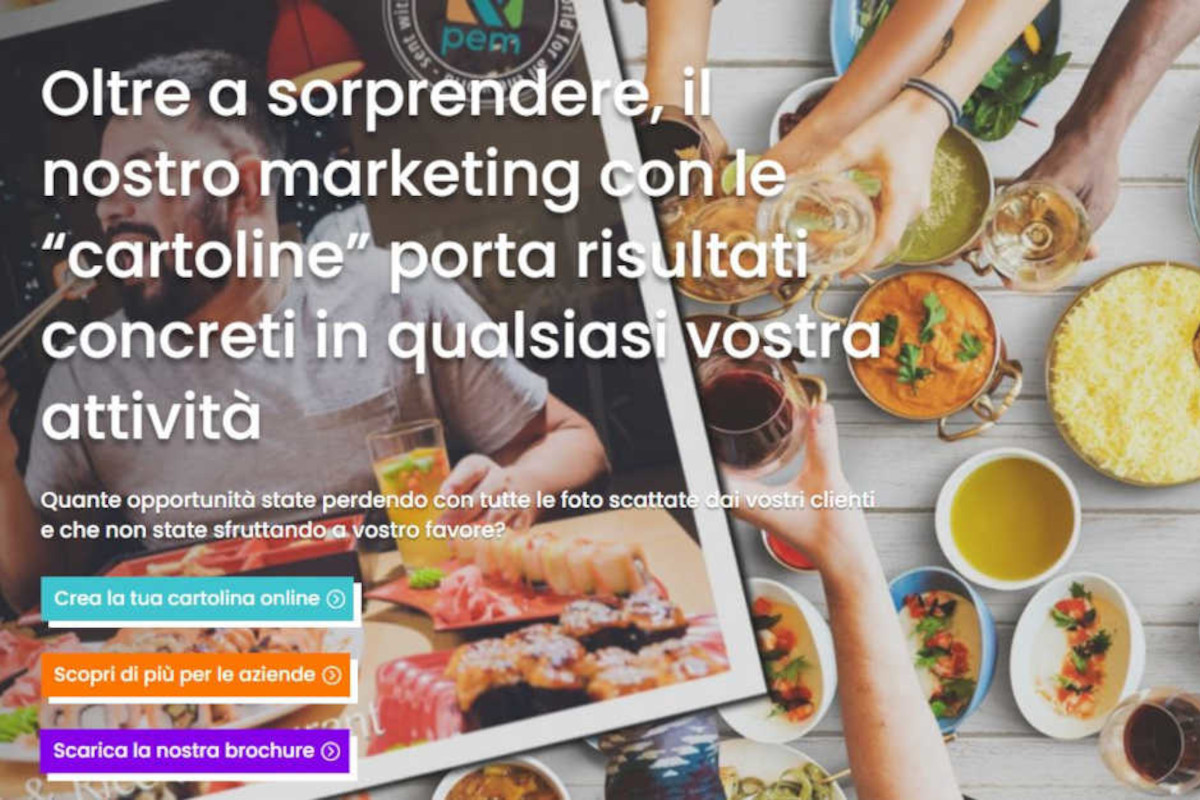PEM Cards – The app for sending paper cards.

Postcards are one of the most common vacation memories, ideal for greeting friends and letting loved ones know we are thinking of them, but until now they have remained anchored in the paper dimension. Postcards are created to be preserved, perhaps rediscovered after time to rediscover the beautiful feelings connected to the people and situations portrayed.
Thanks to Andrea Gambini and Geni Bigliazzi, you can now turn your vacation snaps into custom postcards that can be printed and mailed anywhere!
PEM Cards – The app for sending paper cards.
In 2017, startup Emotion, incubated at the Navacchio Technology Cluster, produced an interesting innovation designed to give new luster to paper postcards, which have now fallen into disuse with the rise of SMS and chat to exchange greetings.
The Pemcards app allows people to create alternatives to the usual paper cards and manage them through the app. In this way, the recipient can rediscover the pleasure of receiving an unexpected mailing full of emotions and pleasant feelings.
Founders Gambini and Bigliazzi long ago worked in a postal services company and matured the idea of combining the enjoyment of taking photos with the enjoyment of sharing them in a solid way.
How does Pemcards work?
The operation of the app is simple and intuitive! In practice:
– you take a picture with your smartphone
– you download the app
– you write the recipient’s address and the message
With a few clicks then you get a physical postcard. Within two minutes, submission is complete!
Thus, in the physical postcard we have personal information and emotional content that helps to strengthen a bond with the company.
The customer at the end can access a report that contemplates the user’s first and last name, e-mail address, date the postcard was sent, and country of destination.
The formula turned out to be really successful: out of 100 recipients, an average of 33 open the QR code included in the postcard!
The success of Postcards 2.0 is due to the fact that it constitutes a customized vintage product that does not even require you to look for the stamp to execute the mailing and physically mail the postcard from the mailbox. Travelers thus can share anecdotes about their travels and at the same time raise awareness of member companies.
This innovation is aimed primarily at companies in the tourism industry. The founders thus involved sponsors, offering them advertising space in the products at the point where in traditional postcards the image description was located.
A Qr code appears in the postcard, which entitles one to benefit from promotional offers from sponsors: well on average 33% of users scan the code, very high numbers when compared to other similar tools.
Pemcards 2.0 allows museums, tour operators, and hotels to publicize their business. In fact, they can give their customers a free credit Pemcards, which then have no cost to tourists and allow them to promote brands.
The end customer then is the company that buys the credits to send the postcards and distribute them to users. With each mailing, the data is automatically saved in the back of the postcard.
The benefits of Pemcards are attested to by the fact that Msc Cruises, Flixbus, the Colosseum and the Imperial Forum in Rome have already collaborated with the implementers.
This start-up faced limitations in the Covid period, but has already made 15 thousand postcards in the three-year period. Thus, the project is still ongoing with growth prospects all to be discovered, possibly thanks to new sponsors who may join the project.
The founders are working to develop new products, such as implementing the ability to share videos by making use of augmented reality and artificial intelligence. Will postcards 3.0 come, then?